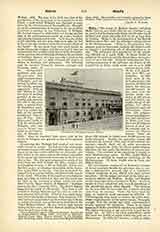

Malchus (Malchos), Greek form of MALLUCH (i.e: counsellor), a name common in the Semitic languages and of special interest as being that borne by the Jewish servant whose ear was struck off by St. Peter. The incident is described by all the Evangelists (Matt., xxvi, 51; Mark, xiv, 47; Luke, xxii, 50; John, xviii, 10), though St. John alone furnishes us the names of the servant and the disciple, and only St. Luke mentions the miraculous healing of the injury. According to the Fourth Gospel, Judas, accompanied by a band of soldiers and servants sent out by the high-priests and Pharisees, set out from the city to apprehend Jesus. After the meeting, when the soldiers were about to seize Jesus, St. Peter drew his sword and cut off the right ear of a servant of the high-priest. We may conclude that Malchus was in the van of the hostile party and showing particular zeal, for St. Peter would hardly have singled him out without reason. Christ at once healed the wound and took occasion to teach His followers a lesson of peace. Later in the evening a servant, related to Malchus, wrung the second denial from St. Peter (John, xviii, 26-7). Since St. John alone gives the name of the servant, we may conclude that he himself was the disciple known to the high priest (John, xviii, 15). The silence of the other sacred writers with regard to Peter’s identity may be ascribed to a motive of prudence, for at the time they wrote the Jews might have punished the disciple, had they known his name.
JOSEPH V. MOLLOY

